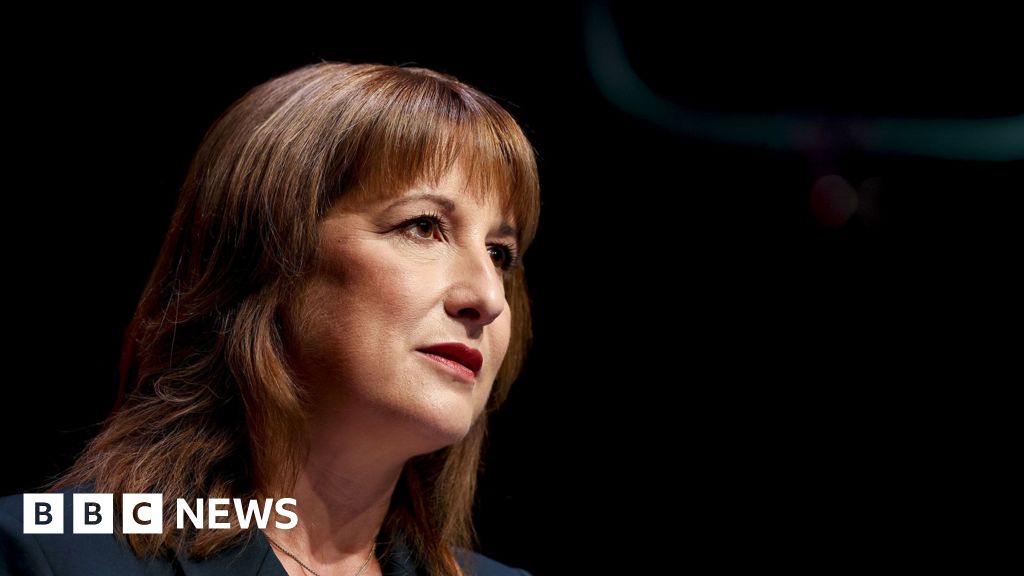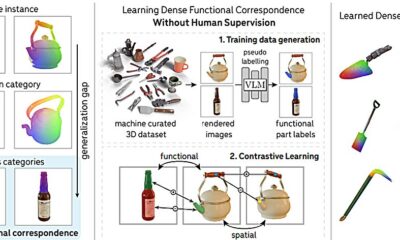Business
Pakistan Stock Exchange Hits Record Gains, Dollar Weakens – SUCH TV

At the start of trading on the Pakistan Stock Exchange (PSX), the market witnessed a surge, while the US dollar also saw a slight decline.
The KSE-100 Index rose by 60 points at the opening, bringing it to 156,201. Yesterday, the index had closed at 156,141.
Meanwhile, in the interbank market, the US dollar decreased by 6 paisas, falling from Rs 281.56 to Rs 281.50.
Business
Teachers to be balloted on industrial action over class contact time

Members of the NASUWT union are set to be balloted on industrial action over class contact time.
The union accused the Scottish Government of failing to meet the SNP manifesto commitment ahead of the 2021 election of reducing contact time by one-and-a-half hours per week.
Announcing the move, NASUWT national official for Scotland Mike Corbett said teachers are “arguably worse off in terms of workload” than before the last election.
“The commitment on class contact time was a recognition by the Scottish Government that additional time away from the classroom was necessary to give teachers sufficient time and space to plan, prepare and assess pupils’ work in order to help students achieve their best and raise attainment.
“Since 2024 we’ve had agreements to work ‘at pace’ and the establishment of working groups by the Scottish Government and Cosla to make meaningful progress on class contact time reduction.
“But the reality is that teachers today are arguably worse off in terms of their workloads and working hours than they were in 2021 when this commitment was first made.
“A reduction in class contact time is as needed now, if not more so, than in 2021.
“It is regrettable that we have been forced to declare a trade dispute and move to a ballot in order to try to force the Government to give teachers the working conditions it itself acknowledges they require to do the job effectively.”
The union’s general secretary Matt Wrack said it had “exhausted all avenues” to reduce contact time, adding: “Where ministers and employers continue to fail our teachers, we will stand up for their right to working conditions which would enable them to deliver the highest quality of learning for our children and young people.”
A Scottish Government spokesperson said: “Ministers have been clear that reducing class contact will help support the time and space necessary for teachers, to allow them to drive improvement and reform in our schools and improve outcomes for their pupils.
“We are committed to working with teaching unions and Cosla to agree our approach to delivering a reduction in class contact time at pace.
“That is why we are providing local authorities with increased funding of £186.5 million to restore teacher numbers – this additional funding was agreed to by local government on the understanding that they make ‘meaningful progress’ with reducing class contact.
“Ministers respect union members’ right to withdraw their labour, but are disappointed that the NASUWT has taken this action while these constructive discussions are ongoing.”
Business
Reeves could face £20bn Budget hole as UK productivity downgraded

The government is facing a bigger-than-expected hole in the public finances as it prepares for next month’s Budget.
A downgrade to the UK’s productivity performance from the government’s official forecaster could lead to the chancellor facing a £20bn gap in meeting her tax and spending rules, the BBC understands.
Rachel Reeves has confirmed both tax rises and spending cuts are options in next month’s Budget.
The Treasury declined to comment on “speculation” ahead of the Office for Budget Responsibility’s (OBR) final forecast, which will be published on 26 November alongside the Budget.
It comes as the chancellor told an audience in Saudi Arabia that Brexit is partly to blame for high inflation in the UK.
Persistent higher prices have been a dampener on UK economic growth, because the Bank of England has kept interest rates higher to control inflation, and that has made Reeves’ job harder to balance tax and spending within her fiscal rules.
“Inflation is too high in countries around the world including in the UK, and one of the reasons for that is that there’s too much cost associated with trade with our nearest neighbours and trading partners,” Reeves said as she argued that closer economic ties with the EU could ease the inflation burden and boost economic growth.
“Businesses, especially small businesses, who face increasing red tape since we left the European Union, for workers, who are now locked out of the jobs market in Europe, there are obviously huge benefits from rebuilding some of those relations.”
The OBR will deliver its final draft forecast for Reeves’s Budget, including productivity – a measure of the output of the economy per hour worked – to the Treasury on Friday.
The forecaster had previously assumed a partial bounce back in productivity growth, but this has never materialised.
This productivity assumption is essential to long-term growth prospects and so, under the current system, even a small change can alter how much money a Budget needs to raise by several billion pounds.
The OBR is understood to have downgraded forecast for productivity by 0.3 percentage points – a figure first reported by the Financial Times – bringing its assumption closer to that of the Bank of England.
The Institute for Fiscal Studies think-tank has calculated that for every 0.1 percentage point downgrade in the productivity forecast, government borrowing would increase by £7bn in 2029-30 – meaning a 0.3 point cut could add £21bn to the Budget hole.
The changes open up an initial gap of some £20bn, rather than the £10-£14bn widely anticipated.
Such a hole could be plugged by hiking taxes, reducing public spending or increasing government borrowing.
Reeves has set out two main Budget rules, which she has described as “non-negotiable”. These are:
- Not to borrow to fund day-to-day public spending by the end of this parliament
- To get government debt falling as a share of national income by the end of this parliament
Reeves admitted on Monday to business leaders in Saudi Arabia that the OBR was “likely to downgrade productivity” which has been “very poor since the financial crisis and Brexit”.
The OBR is expected to explain the decision in detail, but some ministers have privately pointed out that if it had done this earlier, different choices could have been made at this summer’s Spending Review.
There are many other moving parts in the Budget which may bring better news for the chancellor, such as the decline in the interest rates paid on government debt.
However, with other pressures such as the U-turns on welfare spending and a desire to rebuild a bigger buffer in the public finances, speculation is pointing towards significant tax rises, including some possible breaches of manifesto commitments such as changes to income tax.
The Treasury will inform the OBR of its first draft Budget measures next week.
On Tuesday, the government announced it had agreed a series of trade and investment deals with Saudi Arabia, following Reeves’s visit to the Gulf.
This included up to £5bn in support from UK Export Finance for projects in Saudi Arabia which the government said would “unlock” contracts for British firms.
It also announced deals including a £37m investment from Saudi cybersecurity firm Cipher to set up its European office in London, and a £75m investment from Saudi investors and bankers into British digital bank Vemi.
The chancellor also met ministerial counterparts from Qatar and Kuwait for talks over a wider potential trade deal between the UK and the Gulf Cooperation Council.
Business
Lucid targets industry-first self-driving car technology with Nvidia

The Lucid display is seen at the New York International Auto Show on April 16, 2025.
Danielle DeVries | CNBC
Lucid Group is targeting a new goal that would make it the first automaker to offer highly advanced self-driving capabilities in its vehicles in the coming years, the company said Tuesday.
The all-electric vehicle manufacturer expects to launch what it’s calling “mind-off” driving in which a car can essentially drive itself under normal circumstances without a human needing to monitor it or intervene unless there’s a change in circumstances, such as severe weather. That would be like an occupant playing a game of cards or watching TV while the car is driving.
Lucid on Tuesday said it plans to leverage Nvidia‘s “Drive AV” platform and multisensor suite that includes cameras, radar, and lidar — or light detection and sensing, which allows the vehicle to better “see” its surroundings — for the forthcoming system.
Marc Winterhoff, interim CEO of Lucid, said the plan is to debut the new system “definitely in the coming years,” but he declined to specify an exact timeframe other than it won’t be in 2026. The system is first planned for Lucid’s upcoming midsize vehicle before it would expand to other models, he said.
“I want to make sure that we can offer this for our customers in a timeframe that I think is very ambitious, but at the same time, also we’re realistic,” Winterhoff told CNBC. “The main reason why I decided to not start from scratch, just do it ourselves, it’s simply time to market. … Also, it would cost a lot of money.”
Winterhoff said Nvidia’s technologies will be a catalyst for the system, while Lucid plans to actually execute the self-driving technology.
In the meantime, Winterhoff said Lucid plans to continue to increase the automated technologies on its current vehicles — the Air sedan and Gravity SUV — in partnership with Nvidia.
A Lucid-supplied teaser image of its upcoming midsize vehicle behind its current Gravity SUV.
Lucid
“It will be a stepping stone,” said Winterhoff, who has served as interim CEO since company founder Peter Rawlinson left as chief executive in February.
Many companies, including General Motors and Tesla, have promised personal self-driving vehicles but have failed to deliver. Automakers have invested billions of dollars working on autonomous vehicles in recent years, with most pulling back spending after years of trying to deploy the technologies.
What Lucid is aiming to launch is what the industry refers to as “Level 4: High Driving Automation.” As defined by SAE International, formerly the Society of Automotive Engineers, Level 4 technologies should not require monitoring or human intervention under certain, but not all, conditions.
There are a limited number of Level 4 vehicles currently on U.S. roadways. Most notably, Alphabet‘s Waymo operates robotaxis in a variety of cities. Lucid is saying it plans to be the first for a consumer vehicle.
Achieving such a system for Lucid will be daunting, especially given its track record on advanced driver assistance system, or ADAS.
The company, by its own admission, has not lived up to its customers’ expectations. It has been slow to release systems capable of hands-free driving, like many companies offer, or compete with well-known “Level 2” technologies such as GM’s “Super Cruise” or Tesla’s “Autopilot” or “FSD.”
Meanwhile, it’s set to be a record year for EV sales, but demand for all-electric cars is expected to decline with the end of federal incentives of up to $7,500.
Lucid announced the self-driving technology plans as well as other initiatives in conjunction with the Nvidia GTC global artificial intelligence conference taking place this week in Washington, D.C.
-

 Fashion1 week ago
Fashion1 week agoChinese woman charged over gold theft at Paris Natural History Museum
-

 Entertainment1 week ago
Entertainment1 week agoJohn Grisham unveils his first-ever mystery, “The Widow”
-

 Tech1 week ago
Tech1 week agoThis Smart Warming Mug Is Marked Down by $60
-

 Fashion1 week ago
Fashion1 week agoeBay UK seller fee removal sends revenue down but profits rise
-

 Tech1 week ago
Tech1 week agoEaster Island’s Moai Statues May Have Walked to Where They Now Stand
-

 Tech1 week ago
Tech1 week agoAI model could boost robot intelligence via object recognition
-

 Fashion1 week ago
Fashion1 week agoThe North Face and Cecilie Bahnsen launch second collaboration
-

 Tech1 week ago
Tech1 week agoOpenAI has slipped shopping into ChatGPT users’ chats—here’s why that matters














